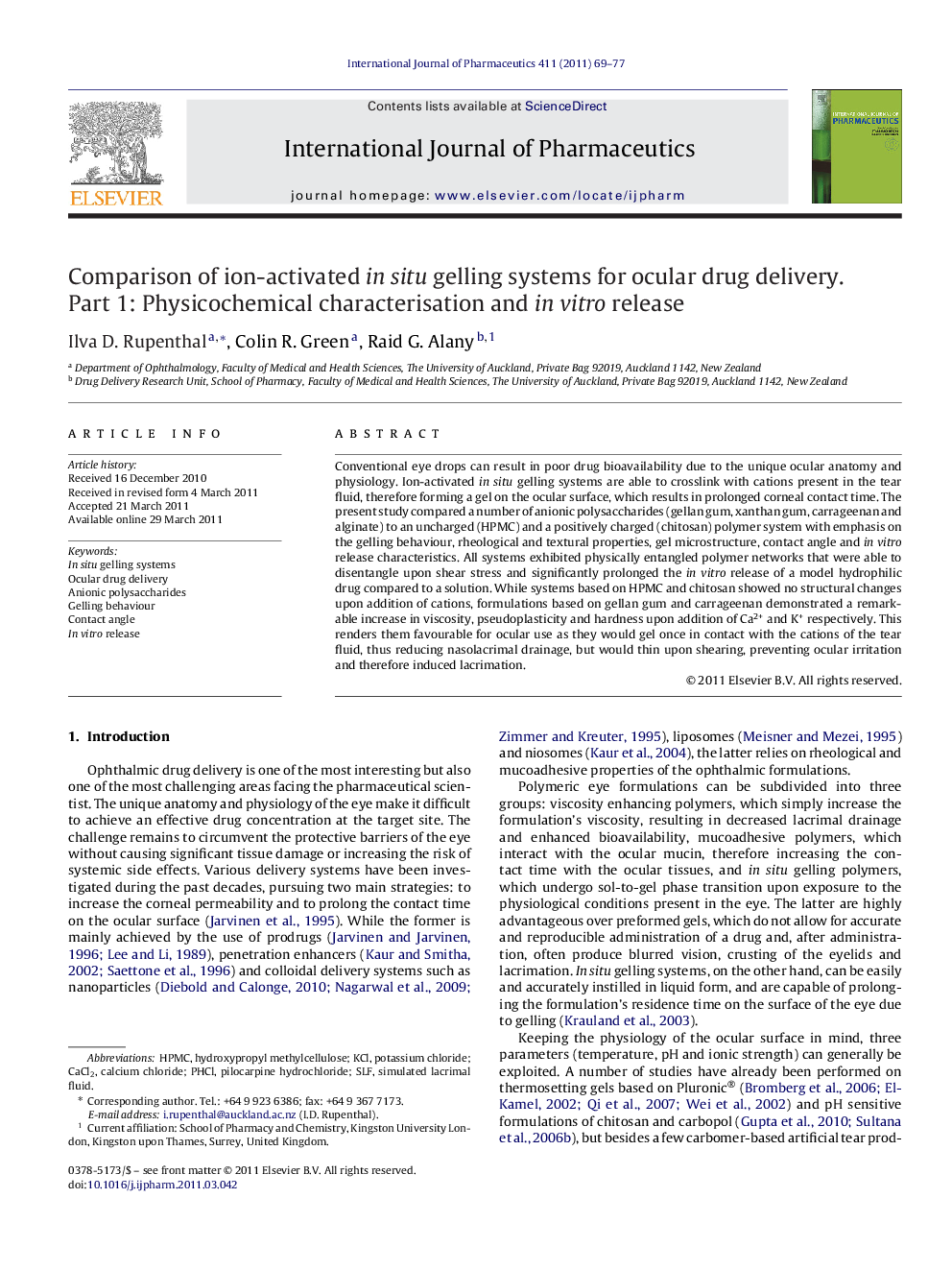| Article ID | Journal | Published Year | Pages | File Type |
|---|---|---|---|---|
| 2503561 | International Journal of Pharmaceutics | 2011 | 9 Pages |
Conventional eye drops can result in poor drug bioavailability due to the unique ocular anatomy and physiology. Ion-activated in situ gelling systems are able to crosslink with cations present in the tear fluid, therefore forming a gel on the ocular surface, which results in prolonged corneal contact time. The present study compared a number of anionic polysaccharides (gellan gum, xanthan gum, carrageenan and alginate) to an uncharged (HPMC) and a positively charged (chitosan) polymer system with emphasis on the gelling behaviour, rheological and textural properties, gel microstructure, contact angle and in vitro release characteristics. All systems exhibited physically entangled polymer networks that were able to disentangle upon shear stress and significantly prolonged the in vitro release of a model hydrophilic drug compared to a solution. While systems based on HPMC and chitosan showed no structural changes upon addition of cations, formulations based on gellan gum and carrageenan demonstrated a remarkable increase in viscosity, pseudoplasticity and hardness upon addition of Ca2+ and K+ respectively. This renders them favourable for ocular use as they would gel once in contact with the cations of the tear fluid, thus reducing nasolacrimal drainage, but would thin upon shearing, preventing ocular irritation and therefore induced lacrimation.
Graphical abstractFigure optionsDownload full-size imageDownload as PowerPoint slide
